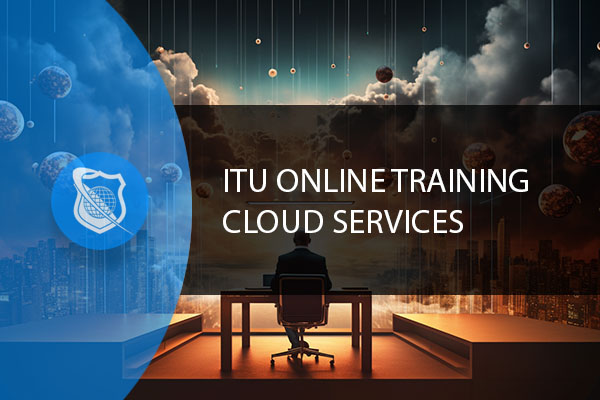Introduction to Cloud Security Challenges
The combination of CASB and PAM represents a formidable approach to securing cloud environments. Cloud computing has revolutionized the way businesses operate, offering scalability, efficiency, and cost savings. However, it also introduces new security challenges. The complexity of cloud environments demands robust security measures, and this is where Cloud Access Security Brokers (CASB) and Privileged Access Management (PAM) come into play.
Understanding CASBs: Role and Examples
CASBs act as gatekeepers between cloud users and cloud services, ensuring secure and compliant use of cloud applications. For instance, Okta’s CASB solutions offer comprehensive visibility into cloud usage, assess security risks, and enforce security policies. A real-world example is how a financial services firm used Okta’s CASB to monitor and regulate access to cloud applications, ensuring compliance with industry regulations and protecting sensitive financial data.
Cloud Access Security Brokers (CASBs) have become an indispensable component in the cloud security landscape, serving as a critical bridge between organizations and their use of cloud services. Let’s delve deeper into the role of CASBs and examine some illustrative examples.
Role of CASBs
- Visibility and Compliance: CASBs offer unparalleled visibility into cloud application usage within an organization. They enable businesses to understand which cloud services are being used, by whom, and how. This visibility is crucial for compliance with regulatory standards like GDPR, HIPAA, and others, as CASBs can identify and control sensitive data stored in the cloud.
- Data Security: CASBs enforce security policies related to data stored in the cloud. They provide features like encryption, tokenization, and access controls, ensuring that sensitive data is adequately protected, both at rest and in transit.
- Threat Protection: By monitoring user activity and evaluating traffic between users and cloud services, CASBs can identify and mitigate threats such as malware or anomalous user behaviors that may indicate a data breach or other security incidents.
- Identity and Access Management (IAM): CASBs integrate with IAM solutions to authenticate and authorize users, ensuring that only the right individuals have access to specific cloud services based on their roles within the organization.
Examples of CASBs in Action
- Okta Integration with Cloud Services: A notable example is how Okta integrates with cloud services to provide seamless identity management and access controls. For instance, an e-commerce company might use Okta’s CASB to manage access to its cloud-based CRM and customer service platforms. This ensures that only authorized personnel can access customer data, maintaining privacy and compliance with data protection regulations.
- Cisco’s Cloud Security Solutions: Cisco offers a CASB solution that encompasses various aspects of cloud security, including monitoring cloud usage, identifying shadow IT, and enforcing security policies. An example would be a global manufacturing company using Cisco’s CASB to gain visibility into its cloud footprint across multiple international branches. This enables the company to enforce uniform security policies across all locations, ensuring data security and regulatory compliance.
- McAfee’s MVISION Cloud: Another example is McAfee’s MVISION Cloud, which provides comprehensive cloud security for enterprises. Consider a healthcare provider using MVISION Cloud to protect patient data stored in cloud applications. This CASB solution would offer encryption and activity monitoring to ensure that patient data is not only secure but also accessed only by authorized personnel, in compliance with healthcare regulations.
These examples highlight how CASBs are instrumental in providing robust security and compliance solutions in diverse cloud environments. By addressing the unique challenges of cloud computing, CASBs enable organizations to leverage the benefits of cloud technologies while mitigating associated risks.

Information Security Manager Career Path
Propel your career forward and be part of an essential member of any management team as an Information Security Manager. This advanced training series is designed specifically for those want to move up into a management position in the IT field.
The Significance of PAM in Cloud Security
PAM focuses on managing and securing privileged accounts, which are prime targets for cyber attacks due to their elevated access rights. A case study highlighting PAM’s importance is how a healthcare organization implemented CyberArk’s PAM solutions. This move enabled them to monitor privileged user activities, detect potential threats in real-time, and prevent unauthorized access to sensitive patient data.
Privileged Access Management (PAM) is a cornerstone of cloud security, primarily focusing on managing and securing the access rights of privileged users. Let’s explore its significance and how it fortifies cloud security.
Key Aspects of PAM in Cloud Security
- Managing Privileged Accounts: Privileged accounts, such as those used by system administrators or IT staff, have extensive access rights. PAM solutions help manage these accounts by controlling who has access, what they can access, and monitoring their activities. This control is crucial for preventing unauthorized access to sensitive systems and data.
- Mitigating Insider Threats: PAM is instrumental in mitigating risks posed by insider threats. By tightly controlling and monitoring privileged access, PAM systems can detect and prevent malicious activities or policy violations from within the organization.
- Enhancing Regulatory Compliance: Many compliance regulations require strict controls over access to sensitive data. PAM solutions help organizations meet these requirements by providing detailed logs and reports of privileged access and activities, essential for audits and compliance reviews.
- Integrating Advanced Security Features: Modern PAM solutions integrate advanced security features like multi-factor authentication, session recording, and real-time monitoring. These features add layers of security, making it harder for unauthorized users to gain access to critical systems.
- Reducing Attack Surface: By limiting privileged access to what is absolutely necessary, PAM reduces the attack surface. Fewer accounts with high-level access mean fewer targets for external attackers, reducing the overall risk of security breaches.
Examples and Case Studies
- CyberArk in Financial Institutions: A notable example is the adoption of CyberArk’s PAM solutions by financial institutions. Banks and financial firms use CyberArk to secure their most sensitive assets, controlling and monitoring access to systems that handle financial transactions and personal customer data. This approach not only strengthens security but also ensures compliance with financial regulations like the Sarbanes-Oxley Act.
- Thycotic in Government Agencies: Government agencies, dealing with highly sensitive data, often implement Thycotic’s PAM solutions. For example, a federal agency could use Thycotic to manage access to classified information systems, ensuring that only authorized personnel can access sensitive national security data.
- BeyondTrust in Healthcare: In the healthcare sector, where patient data privacy is paramount, solutions like BeyondTrust’s PAM are used. Hospitals and healthcare providers implement these solutions to manage access to patient records and critical healthcare systems, complying with HIPAA regulations and protecting patient privacy.
The significance of PAM in cloud security cannot be overstated. It provides a critical line of defense against both internal and external threats, ensuring that the most sensitive and high-risk access points within an organization’s IT infrastructure are well-protected. By implementing robust PAM strategies, organizations can significantly enhance their overall security posture, particularly as they navigate the complex and ever-evolving landscape of cloud computing.
CASB in Action: Deployment and Benefits
Cloud Access Security Brokers (CASBs) have become pivotal in safeguarding cloud environments. Their deployment can significantly enhance an organization’s security posture. Let’s delve into the deployment aspects and the multifaceted benefits they bring.
Deployment of CASBs
- Mode of Deployment: CASBs can be deployed in various modes, including proxy and API-based deployments. Proxy mode can be further divided into forward and reverse proxies, each suitable for different use cases. API-based deployment is common for services like Office 365, where CASBs use APIs to monitor and control access to cloud applications.
- Integration with Existing Infrastructure: For effective deployment, CASBs need to integrate seamlessly with an organization’s existing security infrastructure. This includes alignment with identity and access management systems, security information and event management systems (SIEM), and other cybersecurity tools.
- Customization and Policy Setting: Deploying a CASB involves customizing policies specific to the organization’s needs. These policies might cover aspects like data security, threat protection, and compliance. The customization ensures that the CASB functions effectively within the specific context of the organization’s cloud usage and security requirements.
Benefits of CASB Deployment
- Enhanced Security and Compliance: CASBs provide robust security features such as encryption, tokenization, and access control, enhancing data security in the cloud. They also help organizations comply with various regulatory requirements by enforcing policies that align with standards like GDPR, HIPAA, and CCPA.
- Improved Visibility and Control: Organizations gain comprehensive visibility into their cloud application usage, including shadow IT detection. This visibility allows for better control over data in the cloud and more informed decision-making regarding cloud security policies.
- Risk Management and Threat Protection: CASBs identify risky behaviors and potential threats in cloud applications. They offer adaptive access controls and user behavior analytics to mitigate risks, providing an additional layer of security against cyber threats.
- Data Loss Prevention (DLP): CASBs include DLP capabilities to protect sensitive information from being leaked or lost. This is crucial for organizations that handle sensitive customer or proprietary data in the cloud.
Real-World Examples
- Cisco’s CASB in the Retail Industry: A retail company might deploy Cisco’s CASB to manage access to cloud-based inventory and customer data systems. This deployment helps in enforcing data security policies, monitoring for potential data breaches, and ensuring compliance with consumer data protection regulations.
- Okta’s CASB in Education Sector: Educational institutions, such as universities, can leverage Okta’s CASB to manage and secure access to educational resources and student information systems. The CASB ensures that students and faculty access resources securely and that the institution adheres to educational data privacy laws.
- McAfee’s MVISION Cloud in Corporate Environments: Corporations often use McAfee’s MVISION Cloud to secure enterprise data across various cloud services. This includes monitoring for data leakage, enforcing data security policies, and ensuring secure collaboration across cloud platforms.
The deployment of CASBs offers a comprehensive approach to cloud security, addressing a range of concerns from data protection to regulatory compliance. By integrating a CASB into their cloud security strategy, organizations can significantly enhance their ability to protect their cloud-based assets while gaining a deeper understanding and control over their cloud usage.

Get Ahead In Cloud Computing
At ITU, we offer an exclusive Cloud Computing training series designed to prepare you for certification and/or to help you gain knowlege of all Cloud based platforms including AWS, Azure and Gooogle Cloud.
Get access to this exclusive Cloud Computing Training today.
PAM’s Critical Role in Preventing Cyber Threats
Privileged Access Management (PAM) is a fundamental aspect of cybersecurity, particularly in protecting against cyber threats. Its critical role is underscored by the sensitivity of the assets it safeguards. Let’s explore this role in more detail.
Key Functions of PAM in Cybersecurity
- Controlling Privileged Access: PAM systems ensure that access to sensitive systems and data is granted only to authorized users. By tightly controlling this access, PAM significantly reduces the risk of data breaches and cyberattacks that could exploit privileged credentials.
- Monitoring and Logging: Continuous monitoring and logging of all privileged user activities is a core function of PAM. This not only helps in detecting potential security incidents but also provides an audit trail for forensic analysis in the event of a breach.
- Session Management: PAM tools can manage and monitor active sessions of privileged users. They can terminate or suspend sessions that display anomalous behavior, thereby preventing potential threats in real-time.
- Least Privilege Enforcement: Implementing the principle of least privilege, PAM ensures that users have only the minimum levels of access necessary to perform their duties. This limits the potential damage that could be caused by compromised accounts.
- Credential Management: PAM solutions manage and rotate credentials, reducing the likelihood of password-related breaches. They can also provide password vaulting services, which store credentials securely and reduce the risk of them being shared or stolen.
PAM in Preventing Cyber Threats: Examples and Case Studies
- Banking Sector: In banking, where security is paramount, PAM is used to manage access to financial systems and customer data. For example, a bank might use a PAM solution like CyberArk to control access to its transaction processing systems, preventing unauthorized transactions and protecting customer information.
- Healthcare Organizations: Healthcare organizations use PAM to secure access to patient records and critical healthcare systems. Thycotic, for instance, could be used by a hospital to ensure that only authorized personnel access patient information, thereby protecting patient privacy and complying with HIPAA regulations.
- Government Agencies: Government agencies, handling sensitive and classified information, leverage PAM to manage access to their networks and systems. A PAM solution like BeyondTrust can be used to control access to classified data, ensuring that it is only accessible to individuals with the appropriate clearance level.
- Technology Companies: For tech companies, protecting intellectual property is crucial. PAM solutions can help these companies by controlling access to development environments and source code repositories, reducing the risk of intellectual property theft or unauthorized modification.
PAM plays a pivotal role in preventing cyber threats by managing and securing privileged access, which is often a target for attackers. Through comprehensive control and monitoring of privileged accounts, organizations can significantly mitigate risks associated with cyber threats, ensuring the security and integrity of their critical systems and sensitive data.
Integrating CASB and PAM: A Holistic Approach
In the realm of cloud security, integrating Cloud Access Security Brokers (CASBs) and Privileged Access Management (PAM) systems represents a holistic approach to safeguarding digital assets. This integration not only enhances security postures but also ensures a more comprehensive defense against a wide range of cyber threats. Let’s explore this integrated approach in more detail.
Synergizing CASB and PAM
- Comprehensive Visibility and Control: CASBs provide visibility into cloud applications and user activities, while PAM offers control over privileged accounts. The integration of these two solutions enables organizations to have a panoramic view of their cloud environment, combining insights into user behavior with control over high-risk privileged accounts.
- Enhanced Data Security: CASBs enforce data security policies in cloud environments, and PAM ensures that privileged access to this data is tightly controlled. This combination means sensitive data is not only protected from external threats but also from potential internal misuse or abuse.
- Unified Policy Enforcement: Integrating CASBs with PAM allows for consistent policy enforcement across an organization’s cloud and on-premises environments. This unified approach is crucial for maintaining compliance and protecting against advanced threats that can exploit disjointed security systems.
- Improved Compliance Posture: The blend of CASB’s data protection capabilities with PAM’s access control and monitoring aids in meeting various compliance requirements, such as GDPR, HIPAA, and SOX. This integration simplifies compliance efforts and reduces the risk of costly violations.
- Real-time Threat Detection and Response: CASBs, with their ability to monitor cloud traffic, combined with PAM’s monitoring of privileged account activities, enable real-time detection of suspicious activities. This prompt detection facilitates quicker response to potential security incidents.
Real-World Scenarios of Integration
- Financial Services: In a financial firm, a CASB could be used to monitor and control access to cloud-based financial applications, while PAM would manage the access rights of users with high-level privileges. This integrated approach ensures both regular user activities and privileged operations are secured and compliant with financial regulations.
- Healthcare Sector: A hospital might use a CASB to protect patient data in cloud applications, while PAM could control access to networked medical devices and internal systems. This ensures comprehensive protection of sensitive health data and critical healthcare infrastructure.
- Government Entities: Government agencies can use CASBs to secure cloud-based communication and collaboration tools, while PAM solutions manage access to classified databases and systems. This dual approach ensures secure cloud usage while maintaining strict control over sensitive government data.
- Educational Institutions: Universities can employ CASBs to manage access and security policies for educational platforms and student information systems in the cloud, while PAM can control access to internal grading and administration systems, ensuring data integrity and regulatory compliance.
Integrating CASB and PAM solutions offers a holistic approach to security, effectively addressing both the horizontal expanse of cloud applications and the vertical depth of privileged access control. This integration not only fortifies defenses against a variety of threats but also streamlines management and enhances the overall cybersecurity posture of an organization.

Lock In Our Lowest Price Ever For Only $14.99 Monthly Access
Your career in information technology last for years. Technology changes rapidly. An ITU Online IT Training subscription offers you flexible and affordable IT training. With our IT training at your fingertips, your career opportunities are never ending as you grow your skills.
Plus, start today and get 10 free days with no obligation.
Conclusion: The Future of Cloud Security
As cloud adoption continues to grow, understanding and implementing these solutions is critical for any organization looking to protect its data and resources in the cloud. This dual approach not only enhances security postures but also ensures regulatory compliance, making it a cornerstone in the strategy for modern cloud security.
Key Term Knowledge Base: Key Terms Related to Enhancing Cloud Security: The Synergy of CASB and PAM
Understanding key terms in the realm of cloud security, specifically focusing on Cloud Access Security Brokers (CASB) and Privileged Access Management (PAM), is crucial for professionals navigating this complex and evolving field. These terms form the foundational language for discussing, implementing, and managing effective cloud security strategies. Knowledge of these terms not only aids in better comprehension of the subject but also facilitates more informed decision-making and policy-setting in organizational cybersecurity.
| Term | Definition |
|---|---|
| CASB (Cloud Access Security Broker) | A security policy enforcement point placed between cloud service consumers and providers to enforce enterprise security policies. |
| PAM (Privileged Access Management) | A cybersecurity strategy focused on controlling access to critical systems and resources within an IT environment. |
| Cloud Computing | The delivery of different services through the Internet, including data storage, servers, databases, networking, and software. |
| Data Security | The practice of protecting digital information from unauthorized access, corruption, or theft throughout its lifecycle. |
| Threat Protection | Measures taken to protect against malicious activity or potential damage in a network or system. |
| Identity and Access Management (IAM) | Frameworks and solutions for managing digital identities and controlling user access to resources. |
| GDPR (General Data Protection Regulation) | A regulation in EU law on data protection and privacy in the European Union and the European Economic Area. |
| HIPAA (Health Insurance Portability and Accountability Act) | U.S. legislation that provides data privacy and security provisions for safeguarding medical information. |
| Compliance | Adhering to laws, regulations, policies, and specifications relevant to an organization or industry. |
| Data Encryption | The process of converting data into a code to prevent unauthorized access. |
| Tokenization | The process of substituting sensitive data with non-sensitive equivalents, known as tokens, which have no extrinsic or exploitable value. |
| API (Application Programming Interface) | A set of rules that allow different software entities to communicate with each other. |
| Data Loss Prevention (DLP) | A strategy for ensuring that end users do not send sensitive or critical information outside the corporate network. |
| Multi-factor Authentication | A security system that requires more than one method of authentication from independent categories of credentials. |
| Session Recording | Capturing the screen and user activity during a session for audit or educational purposes. |
| Threat Detection | The practice of analyzing the security of a computer or network to identify any breaches or threats. |
| Cloud Applications | Software programs where cloud-based and local components work together. |
| Regulatory Compliance | The goal that organizations aspire to achieve in their efforts to ensure that they are aware of and take steps to comply with relevant laws, policies, and regulations. |
| Shadow IT | Information technology projects managed outside of, and without the knowledge of, the IT department. |
| User Behavior Analytics (UBA) | A cybersecurity process about detecting insider threats, targeted attacks, and financial fraud. |
This comprehensive list of terms provides a fundamental understanding of key concepts in cloud security, specifically in the context of CASB and PAM, which are critical in managing and securing cloud environments.
Frequently Asked Questions Related to CASB and PAM
What is a Cloud Access Security Broker (CASB), and how does it work?
A CASB is a security policy enforcement point that sits between cloud service consumers and cloud service providers to enforce enterprise security policies when accessing cloud-based resources. CASBs help in providing visibility, compliance, data security, and threat protection for cloud services.
What is Privileged Access Management (PAM), and why is it important?
PAM is a cybersecurity solution that helps organizations control and monitor privileged access to critical systems and data. It’s important because privileged accounts are often targeted by attackers due to their high-level access rights, making PAM critical in preventing data breaches and cyber attacks.
How do CASB and PAM complement each other in cloud security?
CASB and PAM complement each other by offering a comprehensive security solution. CASBs provide broad security coverage and visibility across cloud services, while PAM focuses on protecting and monitoring privileged accounts. Together, they ensure both regular and high-level access is secured against various cyber threats.
Can CASB and PAM solutions be integrated with existing security systems?
Yes, both CASB and PAM solutions are designed to integrate with existing security systems, such as identity and access management (IAM), security information and event management (SIEM) systems, and other cybersecurity tools. This integration enhances overall security without the need for completely overhauling the existing security infrastructure.
What types of organizations should implement CASB and PAM solutions?
Any organization that uses cloud services and has privileged accounts should consider implementing CASB and PAM solutions. This includes businesses in sectors like finance, healthcare, education, government, and technology, where protecting sensitive data and maintaining compliance are critical concerns.
























